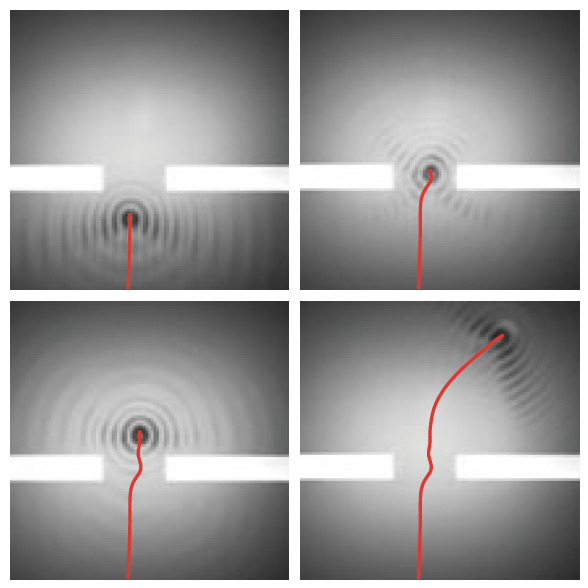
Couder & Fort (2004) demonstrated that when a droplet walking on the surface of a vibrating bath passes through a single or a double slit, it is deflected due to the distortion of its guiding wave field. Moreover, they suggested the build-up of statistical diffraction and interference patterns similar to those arising for quantum particles. We revisit these experiments with a refined experimental set-up that allows us to systematically characterize the dependence of the dynamical and statistical behaviour on the systemparameters. The system behaviour is shown to depend strongly on the amplitude of the vibrational forcing: as this forcing increases, a transition from repeatable to unpredictable trajectories arises. In all cases considered, the system behaviour is dominated the tendency for a drop to walk along a path that makes a fixed angle relative to the plane of the slits. While the three dominant central peaks apparent in the histograms of the deflection angle reported by Couder & Fort (2006) are evident in some of the parameter regimes considered in our study, the Fraunhofer-like dependence of the number of peaks on the slit width is not recovered. In the double-slit geometry, the droplet is influenced by both slits by virtue of the spatial extent of its guiding wave field. The experimental behaviour is well captured by a recently developed theoretical model that allows for a robust treatment of walking droplets interacting with boundaries.
See paper: Pucci, G., Harris, D.M. and Bush, J.W.M., JFM (2017)
